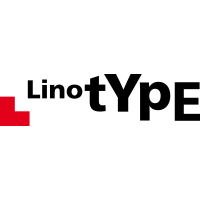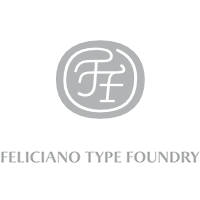- Relevant font family
Nick Shinn's presentation at ATypI'08 | The Old and The New was one of the kind I particularly enjoy. He presented his new Scotch Modern design and gave us insight in the research, conception and development. I remember similar presentations at previous conferences as being highlights for me – Mario Feliciano investigating Spanish types and showcasing his historically inspired designs, Christian Schwartz's account of the genesis of the Guardian typefaces, Dino dos Santos tracing the history of Portuguese calligraphy and displaying the resulting typefaces, amongst others.
Nick Shinn in a contemplative mood © Victor Gaultney
Nick Shinn | Scotch Modern, Fact & Fiction
Besides being a presentation of his revival of a mid-19th century typeface, Nick Shinn's paper also touched upon the history of a genre of types – the Scotch Modern. His interpretation carefully balances the demands of authenticity (historical and cultural) against those of invention (meeting the needs of extensive OpenType features in multiple encodings – Latin, polytonic Greek, Cyrillic including Asian).
Nick Shinn's journey began with the acquisition of the 23rd Annual Report for the Year 1869 of the New York State Cabinet of Natural History. He'd bought the vintage book for $45, more for the typeface it was set in than for the beautiful illustrations. It made him decide to create a facsimile of the typeface. This is in contrast with his earlier revivals which had been primarily conceptual exercises – Artefact is a post-ironic exercise in vertical stress reduction on the Century model; Beaufort is an enhanced sans with "legibility" proportions based on Times Roman; Bodoni Egyptian is a monoline slab serif version of the neo-classical standard; the small-text workhorse Goodchild is Nicholas Jenson's seminal type of the 1470s with large x-height and short capitals; the faux finish of the condensed Walbaum revival Walburn discreetly apes the look of letterpress; and Worldwide is a typeface in the Century idiom, designed with present-day publishing in mind.
The transition of a letterpress original to a digital typeface for offset always creates an extra layer of difficulties. Due to inconsistencies in paper and printing, the outlines of the characters can often be quite blurry. Having no access to the actual fonts or matrices, the designer is left to wonder what the precise shapes were. This means a fair amount of guesswork and interpretation comes into play. Nick Shinn opted for working from the original book and do live drawing, sketching the characters directly into FontLab. The results were then evaluated by printing sample pages and checking them against the source material.
Nick Shinn explained the genre's physical characteristics through a theory of contextual press gain. Referring to the question in the title Nick Shinn situated where exactly the Scotch Modern style of typefaces originated from: Modern or Didone faces – with Bodoni (1800-1910) being the most well-known example – and the Scotch faces like Austin-Foulis (1825), Linotype Scotch (1903), Caledonia (1940) and FB Scotch (1993). He proceeded to show a couple of Scotch Modern faces in use in Vanity Fair (1935), Esquire (1934), and Woman's Day (1953), concluding that contextual effects inform aesthetics and durability, and recognizing new technology in fostering this new look.
Work on his own Scotch Modern had only started, and soon the audience began to grasp the extent of the work involved. After finishing the standard character set in five styles – a Display weight, and a Regular and Bold with matching italics – Nick started working on the Cyrillic characters. As he didn't have any reference material he designed them by comparing similar faces and extrapolating those shapes. After getting advice from Maxim Zukhov amongst others, the design evolved and became more authentic. Nick found out afterwards that his Cyrillic was surprisingly similar to typefaces found subsequently.
Designing the Greek proved to be more difficult. The problem with the plain Didot Greek types is that – although the capitals correspond to the international Scotch Modern style – there is no strong model for the lowercase. The contrast of letter forms between straight and italic lacks a consistent scheme, and character count is inconsistent between straight and italic. In Nick Shinn's Scotch Modern the straight Greek follows the upright posture of the international Scotch Modern, while the italic has the lively Baroque stress of traditional Greek types.
During the design process Nick Shinn was looking for consistency in style but differentiation between scripts. At some point he was confronted with the phenomenon of glyph proliferation. Because of the many InDesign options he didn't want to look as if there was stuff missing. This meant he kept adding glyphs and features: ten figure styles; swash capitals in all three scripts; Latin characters for transliteration of Arabic and Devanagari; aesthetic alternates; symbols; context-sensitive diacritics and punctuation. Nick also incorporated layered stylistic sets in Greek and orthographic alternates in Cyrillic. After having overwhelmed us with the complexity and completeness of the character sets for his Scotch Modern, Nick Shinn concluded his presentation by showcasing the final element; a unicase version that worked throughout the three different scripts – Latin, Cyrillic and Greek. This effectively reduced the number of characters from 160 to a compact set of 53 which he displayed with this beautiful graphic.
As I wrote in my introduction, Nick Shinn's presentation was informative, highly enjoyable, and grounded in history. It made the audience realize what a mammoth task it can be to design an interpretation of a historical typeface and turn it into a fully developed feature-rich multiscript OpenType type family. Furthermore the resulting family of typefaces is gorgeous, more elegant than your regular Didone, with expansive serifs that almost work as connectors, especially in the italics. Discovering all the nuances in the design and the many treasures to be found in the glyph palette was a true joy.
More ATypI'08
ATypI'08 | The Old and The New
ATypI'08 | Jerry Kelly and John Downer on Type Revivals
Header image:ATypI people way below St. Petersburg © Titus Nemeth
 ライヴリィ |  EK Type |  Christian Schwartz |  Authentic |
 Context |  Linotype |  Feliciano |  Type Revivals |